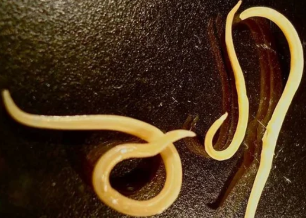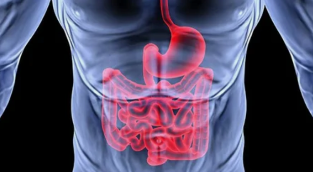Than to start treatment against parasites, it is important to determine exactly what exactly kind is present in the body. It is necessary to pick up effective treatment, because most of the drugs are specially designed to get rid of a specific type of worming.

Are worms protozoa
Sometimes you can hear the phrase that the patient is infected with protozoa worms. You need to realize that the simplest – it is the solely single-celled microorganisms, which in the extreme case – the organisation of the colony. But they are never multicellular, as are worms and helminths.
In the simplest of all the processes occur within the cell cytoplasm and cell nuclei, while for worms the anatomical organization is much more complicated: they have differentiated organs that perform a specific physiological function. So the shift of worms to the simplest fundamentally wrong.
Sometimes worming so-called protozoa parasites in comparison to insects: bedbugs, lice and other things, so as the last is worth a much higher evolutionary steps. In this exposition of worms protozoa home.
- Symptoms, treatment and prevention of sarcocystosis in humans.
- Come, zdf worms black color in humans.
- What they look like eggs of worms.
The most common parasites
The most common on the endoparasites belong to the helminths (worms), which, according to various sources, infected more than 80% of the population of the planet.
A huge number of these parasites are divided into basic types:
- hookworm – roundworm (ascaris, pinworms, Trichinella, whipworm, etc.);
- cestodes – tape worms (lantecy, pig and bullish tapeworm, tapeworm, etc.);
- flukes – worms-happiness (liver, blood, lung, as well as lucky, living in the intestine).
Sometimes you can stumble on more than the overall classification, according to which all types of parasites, people, are divided into:
- translucent (intestinal), parasitic in the intestines;
- cloth, localized in other organs and tissues.
Let's take a brief description of the most common types of de-worming.
Roundworms (hookworm)
- Ascaris – are the most common roundworms in lengths from 20 to 40 cm, are parasitic in the small intestine, but in advance of the move in the human body, hitting the circulatory system and the respiratory system. Along with the intestinal problems these parasites can occur in the liver and gall bladder, heart and lungs. A common symptom of ascariasis – an allergic reaction.
- Pinworms – small worms up to 1 cm, affecting the bowel and can see to on enterobiasis with impaired functioning of the digestive system, fatigue, sleep disorders, etc. the Characteristic sign of the presence of pinworms – itching in the anus, where they lay their eggs.
- Trichinella – these microscopic worms (their size is only a few millimeters) lead to the most difficult diseases – trichinosis, which no treatment can lead to death. Adults of the species inhabit in the body of the people in the muscles (respiratory, face, etc.), which causes muscle pain, fever, swelling, allergic rashes on the skin.
- Vlasoglavy – small worms (length up to 4.5 cm, the front part of your body
in the form of a thread), the larvae of which cause trihozefalez with diarrhea, acute abdominal pain and other symptoms that resemble appendicitis. In consequence of the intoxication of the organism develops anemia.
Tape worms (cestodes)
- Broad tapeworm, the length of your body, which reaches up to 10 m, sees to the development of the difillobotrioz with nausea, weakness, vomiting, unstable chair, asthenia and anemia.
- The pig tapeworm has a length of from 3 to 8 m, the parasite mainly in the small intestine and causes two disorders: taeniasis with the dyspeptic, asthenic-neurotic and abdominal syndromes, and cysticercosis with intoxication, intestinal, allergic, and respiratory syndromes. Depending on the localization of tsistitserki affects the muscles, brain, heart, eyes, etc.
- Bullish tapeworm whose length may reach up to 18 m, causes beef tapeworm infection, and is considered one of the most dangerous species of worms. If not do de-worming, can live in the human body for up to 18-20 years! Localized in the large intestine, causes severe intoxication products of his life, as well as diarrhea, nausea, vomiting, abdominal pain, anemia, allergic reactions and problems with the nervous system.
- Dwarf tapeworm long, 1.5-5 cm, – the source of the gimenolepidoz with dyspeptic, pain and asthenic-neurotic syndromes, from which suffer particularly from the digestive and nervous system of your body, and also liver.
- Echinococcus is considered to be a small caterpillar worm – its length is only 2.5 to 8, rarely 9 mm, but the assault on them has dire consequences in the form of damage to the liver and lung where they form cysts and tumors, which cause dysfunction of these organs.
Worms-luck (flukes)
- Liver Fluke or liver Fluke shape resembles the leaf of a length of 30-50 mm and a width of 8-13 mm, has a suction cup. It damages the shell of the liver and blockage of the bile duct, it is able to completely block the flow of bile. Can cause cirrhosis, hepatitis and liver cancer.
- Cats (siberian) Fluke, helena cats, Fluke, flat worm length 4-13 mm. Localization – channels of the gallbladder, liver and pancreas. Causes opisthorchiasis with the development of gastritis, ulcers, pancreatitis, cholecystitis and up to the cancer of the liver, which can lead to deadly.
- The lung Fluke has ovate-shaped, reddish-brown body with fine spines in lengths from 7.5 to 12 mm with a width of 4-8 mm. Affects the lungs, causing inflammation, exudative inflammation of the pleura, focal fibrosis and lung cancer. When the penetration into the brain causing inflammation and meningoencephalitis.
- Shistosoma (blood cells luck) – dioecious worms about the size of 1-2 cm, on the eggs, which cause enlargement of the liver, spleen and lymph nodes, the education of polyps in the intestines, diarrhea, granulomatous inflammation, which sees to bladder cancer.
Diseases that cause
The most dangerous parasites that live in the human body, they can trigger various diseases. Very often a disease, provoking a specific parasite, which bears the same name, as is he. So, different kinds of parasites in the human body can cause the following diseases:
- some of the parasites inside a human being (happiness) provoke the trematode;
- on cestodosis arise when the defeat of the conveyor worms;
- if in an adult helen of the child in the intestine are roundworms, then diagnosed with nematodes;
- leeches cause hirudins;
- Arctocephalus provoke skrebni.
However, parasites in the human body can hit even a single authority. Depending on the localization of the parasites in the human body excreted as parasitic diseases:
- When eye damage may occur with onchocerciasis, demodectic mange, cysticercosis and myiasis;
- Diseases of the organs of the digestive system, which cause single-celled parasites and helminths, – ascariasis, trichinosis, hookworm, enterobiasis, disorders of the myiasis and metagonimus;
- Brain diseases – echinococcosis, toxoplasmosis, alveococcosis, and cysticercosis;
- Dermatological disease – demodectic mange, lice, scabies, on the pulicosis, trombitas, ftiras;
- Pathology of the lungs – echinococcosis, ascariasis, acariasis, alveococcosis, tomingas, etc.;
- Diseases of the liver – opisthorchiasis, alveococcosis, echinococcosis, on clonorchiasis;
- In the mouth, in the ear and oral cavity, parasites can cause different types of myiasis;
- Pathology of the heart – dirofilaria and echinococcosis;
- Diseases of the genitourinary system – alveococcosis, urate measy, echinococcosis;
- Pathology of blood vessels – filaretos and schistosomiasis.
Apartment helminths
Flat worms-parasites, helena luck (flukes), have a characteristic leaf shape of your body. The structure is sufficiently organised — they have a digestive, excretory and nervous system. In the course of the life cycle of change their masters.
The spread of such species:
- Siberian Fluke (cat Fluke), helena opistorchis. The most common infection occurs through raw fish, which sees to the emergence of a quite dangerous disease — opisthorchiasisa. Reproduction of the parasite takes place very rapidly, which can cause serious consequences. Worms have a yellowish tint, and the length may exceed 12 m. Secured in the human body, these parasites cause internal bleeding, violation of a sharp outflow, causing the dysfunction of the pancreas. Dangerous effects: cholangitis suppurative type, ahilii, cholangiocarcinoma.
- Liver Fluke. Intermediate hosts are representatives of the cattle, and man becomes infected by eating poorly processed meat of infected animals. As a result of infection develops the disease fascioliasis. According to the size of these worms is relatively small (no more than 5-6 cm), but are able to trigger dangerous pathology: hepatic abscesses, cholangitis, hepatitis. Through the blood, the larvae of the parasite can spread throughout the body.
- Shistosoma. The worm is able to settle down in the blood vessels, consumes the blood components. As a result of his life, perhaps, that the development of varicose veins of veins, the tumor formations. The main symptom — an intense general intoxication.

In the human body can detect a huge number of different worms-parasites capable of being secured in various internal organs. All cause chronic disease, which can cause serious pathology. Upon the occurrence of the symptoms of helminthiasis of any type, it is necessary to visit a doctor for initiation of adequate treatment.
Bullish tapeworm
Bullish tapeworm can reach a length of up to 12 m. It is a hermaphrodite that can produce more than 100 000 eggs, which are excreted with the feces. The eggs get into the soil, then to plants, these plants her cattle. In the body of the animal, the eggs become larvae, which localized in the muscles. If a person uses food contaminated beef, the larvae get to the intestine. From person to person, the larvae are not transmitted.
Adult worms have a head with four suckers, uterine and body, consisting of segments. The number of segments is constantly growing, mature segments may detach from the worm and crawl from the intestines of a person out.
Bullish tapeworm
Symptoms of illness is nausea, vomiting, dyspeptic disorders, increased salivation, dizziness, weakness, nervousness, rapid fatigue, pain in the abdomen of uncertain localization, allergies, changes in appetite.
In order to derive a bullish tapeworm from your body scheme is available, consisting of 3 stages: preparatory (cleansing your body), the treatment of anti-parasitic drugs, saving (diet, phytotherapy).
Helminths tapeworms
To helminths, belt type, helena on cestodes, include a variety of flat worms, the length can be from 2 mm to 10-12 m, the Body as parasites, has a special structure — the numerous segments, the neck and the head with suckers (hooks) for attaching to the walls. On a cestode — the hermaphrodite and the eggs are placed in the segments. The nutrients the worm is drawn through the entire surface of your body.
Are allocated to the following most common types of tape worms are:

- Alveolar. They are capable of inducing cholangitis and abscess, but also spread to the spleen, the muscles and the brain.
- Apni, helena tapeworm. Bullish tapeworm excites diseases of the beef tapeworm infection and is placed, usually in the small intestine. Serious complications — cholecystitis, intestinal obstruction, appendicitis. This worm is able to lead to the following consequences: atrophy of the intestinal shell, glossitis Gunther, leukopenia.
Protozoa, parasites
Toxoplasma gondii (Toxoplasma gondii) – a kind of parasite, the primary host are cats. Also can be transmitted by warm-blooded animals and man. A disease caused by Toxoplasma is called toxoplasmosis. The course of the disease is moderate, with the exception of the slaughter of the fetus inside the mother's bosom in the time of pregnancy, which creates serious consequences, both for the mother and for the fetus, and even lethal outcome.
Amoeba is a simple single-celled organism that is considered to be one of the first creatures that lived on the Earth. The disease, caused by the amoeba, is called amoebiasis. Intestinal infection with the prevalent ulcerative lesions of the colon with the occurrence of bloody diarrhea, a possible education secondary intestinal bearing, which has a tendency to a chronic leak.
Malaria Plasmodium – the simplest single-celled being, in the cycle of development, which one is the temporary lord, and mosquito – constant. In the human body parasitic Plasmodium presented 4 types:
- P. malarie – four-day malaria;
- P. vivax — three-day malaria;
- P. ovale — a three-day ovale malaria;
- P. falciparum — a tropical malaria;
The length of the interval between the rising currents depends on the type of pathogen. In addition, everything develops anemia because the Plasmodium amazes blood cells red blood cells.
Giardia — the simplest pear-shaped, which have two nuclei and four pairs of flagella. The main source of this is the pigs and the people. Giardiasis — a common disease with a beneficial defeat of the liver and the small intestine. The disease can take place both in light and in heavy form.
Trichomonas – bičíkys single-celled organisms in the shape of pears, causing the disease trichomoniasis, are transmitted through sexual contact and attack the urinary system. Noticeably, that the sick men and women, but in men the disease occurs usually asymptomatic.
Trypanosoma – a genus of single-celled organisms, the simplest bičíkys. Cause severe disease trypanosomiasis, a deadly to humans, are sleepy disease. Carrier of trypanosomes are bed bugs, tse-tse fly. In the body of the host the parasite is spread under the skin, then penetrates into the lymphatic system and blood circulation. Most of the pathogens are located in the spinal and brain, where it destroys cells and secrete their toxins.



























